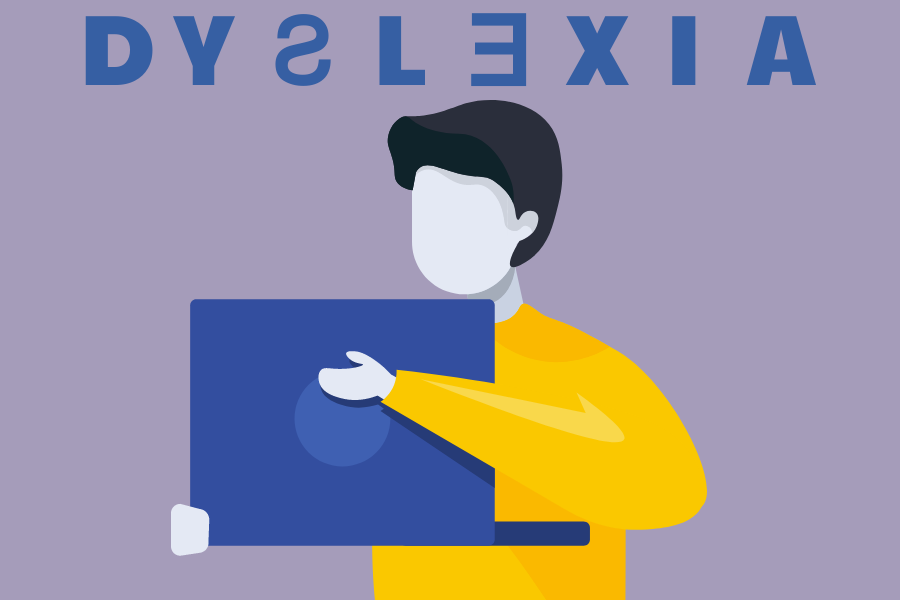My experience navigating through online school with dyslexia
March 23, 2021
I’ve known I’m dyslexic ever since I struggled to read the Berenstain Bears books in third grade. After this realization, I began to start the long process of figuring out creative ways to remain at the same academic pace as the other students.
I started making adjustments. Instead of reading hard copies of books, I’d listen to the audio version, all while solving a puzzle or finishing up my math homework. I wrote exclusively in cursive, as I found it easier to process than print. A tutor even had to reteach the alphabet to me from third to sixth grade. My experience with dyslexia has taught me many things, but by far the most valuable skill I’ve learned is how to work alone and in a way that best satisfied my unique learning skill set — a skill which has helped me adjust to the new challenges virtual learning presents.
Dyslexia is a learning disorder that typically makes it difficult for someone to read and write. People with dyslexia will often use skills aside from reading and writing to supplement their learning. When I would ask a teacher questions in person, I’d associate their answer with the surroundings in their classroom — the teacher’s desk, the posters on the wall and what item they may have used to explain.
Dyslexia helped me become increasingly perceptive of physical cues, but in virtual learning, now consigned to a two-dimensional screen and audio, I’m often unable to use this skill.
While Whitman has not yet addressed this problem and many other new issues students with learning disabilities face, I’ve been able to take advantage of some new opportunities that online learning presents.
Often, teachers grant students who don’t have accommodations longer durations on assignments to mitigate potential technical difficulties. Teachers also have relaxed deadlines and allocated extended time to address pandemic-related mental health issues. I have the extended time accommodation and use the time to thoroughly read prompts and double check all my answers.
Without such accommodations, I doubt my virtual learning experience would have been as successful over these past few months, especially in my AP Literature and Composition class, where I constantly find myself rereading passages to make sure I fully understand the content. In a brick and mortar setting, I would have had to rush through essay-writing, cramming in as much substance as possible before I miss my next class; that worry is gone with remote learning.
As my schooling environment evolved with the pandemic, so did my learning strategies. To help get me through the online testing environment, I listen to music while studying and test-taking as a way to focus and remember material. I can associate what I learn while studying with that same music when taking a test. I’ve also spent a great deal of time researching material that elaborates on class content. I handwrite notes — even when they are supposed to be typed — to retain information better.
Maneuvering through remote learning while having dyslexia has reminded me of how far I’ve come since being diagnosed. I was given a burden that set me back in almost every aspect of my life, but it also prepared me for the challenging time of lockdown. Although no one could have predicted the pandemic, years of crafting my own learning strategies have prepared me for new circumstances.






